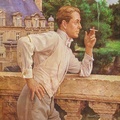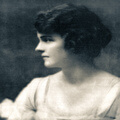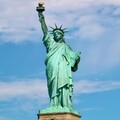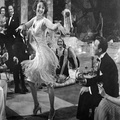The Great Gatsby by F. Scott Fitzgerald is a classic American novel that explores the idea of the American Dream through the tragic story of millionaire Jay Gatsby and his unrequited love for Daisy Buchanan. This piece is not only popular as an idea for a movie but also for a persuasive essay. You can find the finest free argumentative essays about the Great Gatsby and other great works on our website. Reviewing essay examples on the Great Gatsby will enable you to consider different points of view on the work. This can help the writer develop their own ideas and arguments and make sure their writing is interesting and easy to read.
The Great Gatsby research paper can explore many aspects of the book, including symbolism, themes, and characters. After all, the book even became the primary source for many films. This added to The Great Gatsby’s popularity and opened up new opportunities for compelling essays about the story’s themes and characters.
When writing a paper, start with a clear essay introduction that sets out the thesis statements and main points for discussion. The essay should also include a summary of the book and a literary analysis of major themes, such as the corruption of the American Dream and the consequences of the pursuit of wealth and status.
It’s important to dwell upon the characters in the book when writing an essay about The Great Gatsby. Jay Gatsby, the protagonist, is a tragic figure who epitomizes the hope and frustration of the American Dream, while Daisy Buchanan embodies the superficiality and superficiality of the wealthy elite. To write an effective essay, develop a clear thesis and argumentation, which should be shortly summarized in the conclusion. Using prompts, topics, and outlines will also help organize an essay and develop clear arguments.
The Great Gatsby is a tragic love affair novel written by Scott Fitzgerald and published in 1925. The book setting is in the 1920s and revolves around a man’s struggle to achieve the American dream. Nick Carraway, who plays the role of a narrator, is an upper-class American who migrates from the West to New York in a bid to try bond trading. He encounters the wealthy Jay Gatsby who together comes up with plans of reviving the lost love with Nick’s cousin, Daisy Buchanan. However, Jay Gatsby engages himself in criminal activities such as selling illegal liquor in the United States. Through this business, he is able to finance lavish parties frequently. In the long run, he gets into contact with Daisy and rekindles their love affair. On the other part, Tom, Daisy’s husband has an affair with Myrtle Wilson, wife to a garage owner. One day, Daisy accidentally crushes Myrtle using her husband’s vehicle. The deceased husband begins hunting for his wife’s killer and is directed to Gatsby’s place. Filled with anger, Myrtle’s husband fired gunshots at Gatsby and killed himself thereafter. This essay endeavors to present a correlation between the Great Gatsby and the decline of the American Dream.
Notably, there is a close correlation between the Great Gatsby and the Decline of Them American dream as things never ended well for the dreamers in the novel. The American Dream is about the belief that any person regardless of their gender, race, nationality or class can lead to a successful life in America (Hartford 23). However, this is only possible under one particular condition of hard work. It is essential to point out that this belief which sets the basic foundation upon which America was established was written by James Truslow Adams in 1931. The beautiful dream, therefore, gives a view of a perfect society with responsible citizens who are willfully paying their taxes, do not involve in retrogressive habits such as racism and discrimination. The dream as well presents a class of equality for all.
The decline of the American Dream is about the citizens who have the heart to put in extra hard work in a bid to make their dreams a reality. However, the American dream cracked a long time ago. Back in the 1920s, there are some individuals who had made massive amounts of money. However, the excessive material thirst of the wealthy class ruined the whole plan by contaminating their dreams. Chapter 1 presents a setting of the World War I. What follows is an unceasing excessive desire for pleasure and money that ended up in overwhelming the societal values of liberty and equality.
In that connection, the aggressive increase in the stock market significantly contributed to an increase in the state wealth. On the other part, this also led to an escalating boom in consumer greed which was manifested in extraordinary heights. This could be attributed to the fact that there was a flow of more money as industry owners registered massive profits. With the high flow of profits from entrepreneurship, this implied that anyone could earn a fortune if only they genuinely worked hard and showed commitment. In addition, the enactment of the Eighteenth Amendment in 1919 prohibited the sale of alcohol. However, following the multicultural masses’ unquenchable thirst for liquor, people had to derive the underworld supply of the same despite its prohibition.
It is worth noting that this scenario relates to the situation described in the Great Gatsby. Jay Gatsby, one of the main characters originates from a low-class Midwestern family. However, within no time he had made lots of money through the sale of illegal liquor. Through the booming of his illegal trade, he was able to establish a luxurious mansion in the fictional village of West Egg. The mansion was strategically located directly opposite the water from Tom’s mansion, another wealthy man leading a lavish lifestyle.
The author has wittingly utilized a symbolic geographical view to create a distinction between Tom Buchanan and Gatsby. This represents the tension between the old and the new kinds of affluence. On the other part, the West Egg. The settlement represents the self-made wealthy individuals whereas the East Egg.is a symbol of aristocracy. The West Egg. is characterized by a huge heap of ashes, these deposits are as a result of the insatiable fires of the young capitalist society. Notably, Gatsby was ready to undertake any action that could make him make quick money and rekindle his old love with Daisy, Buchanan’s wife. In a bid to attract Daisy’s attention, he constantly threw lavish parties at his mansion. Therefore, Gatsby’s money is merely for purposeless enjoyment (Matterson 60). On the other part, Tom’s career is not clearly defined. However, his wealthy background could be the source of his money. Notably, the narrator hints to the audience that, “his family was enormously wealthy- even in his college his freedom with money was a matter of reproach…” (Fitzgerald 6). Tom, therefore, leads a lavish lifestyle due to the money and property earned following the hard work of his fore-parents who put in effort in a bid to achieve the American dream.
The Great Gatsby does not only narrate about the frustrated love between man and woman. The themes go deeper to address the disparity between time and social status as well as the effect on society. Excessive greed devastated the American Dream. The few who were able to climb the wealth ladder were accepted regardless of whether they used acceptable or criminal means. The interesting novel highlights the relationship between inequality and intergenerational social immobility that is witnessed across the globe. The disconnect between the wealthy and the low class could be explained by the lack of access to basic needs such as education and shelter for the low class. The author illustrates the decline of the American dream through the lavishness and sloth of the low class and high-class people.
The American Dream collapsed a long time when excess greed and plutocracy replaced sincere hard work and commitment (Leonard 516). The book illustrates the effects of a failed democracy. In a nutshell, the Great Gatsby is an illustration of the optimistic American dream. In the novel, people from all walks of life migrate to New York City to try their fortune of success. The American Dream addresses economic prosperity as well as religious and racial tolerance. However, the promising life is destroyed by the catastrophic events in the novel. This implies a crash on the American Dream. The sudden tragic events at the end of the novel quite well relate to the collapse of the American dream. The dream is characterized not only by a pessimistic but also a mournful attitude.



